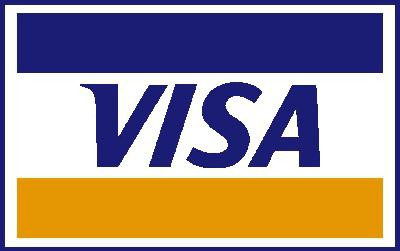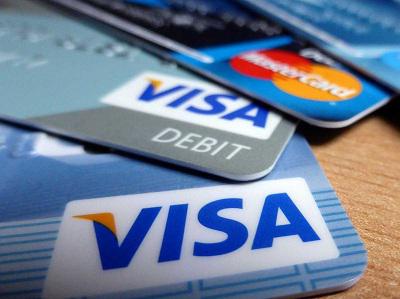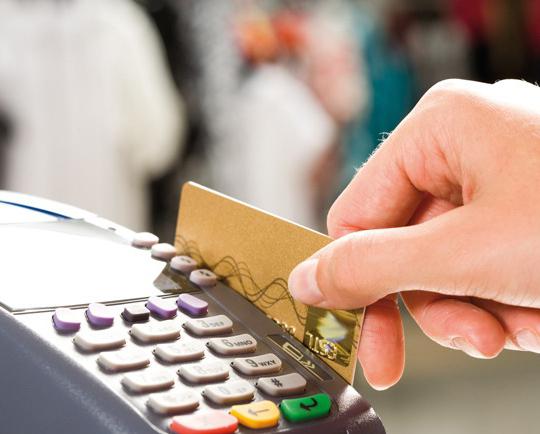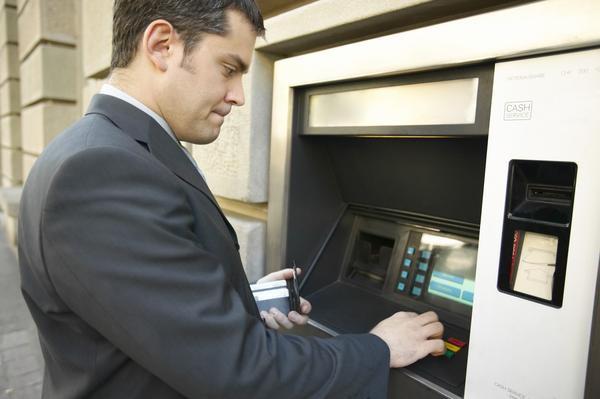“Visa” and “Mastercard” are payment systems that many banks in the world use to make payments on cards belonging to both individuals and legal entities. More details about the systems, about the history of their occurrence, about how they differ, will be discussed in our article. We will also answer the question of what to do if your Visa and Mastercard card is blocked.
A bit of history
It all started with the fact that in 1958 one American bank, namely Bank of America, issued a payment card, by the way, a novelty for its time. After that, the flow of customers wishing to get a “piece of plastic with money” increased so much that they had to create a separate service company, called Bank Americard Service Corporation - it was a prototype of the Visa payment system. She received her memorable name a little later. And this is not an abbreviation, but in the literal sense of the word - “visa”, a short and easy to remember name. For the first time, cards with a bright blue logo were released in 1976. As for the Master Card, it was founded a little later (if we count the 1958th year of the foundation of the “Visa”), namely in 1966. Several, again, American banks entered into an agreement to issue a single payment system, called the Interbank Card Association. Later it was also changed, choosing a more capacious and concise - Master Card.
Market share of payment systems
Since “Visa” and “Mastercard” are extremely popular systems, one of these logos can be found on 83% of payment cards in America and other developed countries. Actually, “Visa” is somewhat more popular than its competitor, it has a global market share of about 57%, which makes up most of it. As for “Mastercard”, here the indicators are somewhat more modest - 26%. Today, cards bearing one of these logos are accepted in more than 200 countries around the world. Note that “Visa” and “MasterCard” are payment systems that were originally based on the dollar. Not surprising, because their homeland is the United States. But, one way or another, you can get plastic in almost any currency in the world, most banks work with them.
What are the differences between Mastercard and Visa cards?

Actually, if you are in Russia and ask this question to an employee of a state or private bank, then you are unlikely to get a definite answer. For Russia, there are no significant differences that can drastically affect the choice of a system. Banks themselves sometimes organize promotions and advertising campaigns calling for the choice of a particular system, but rather, this means that their terms of cooperation are more favorable. Of course, the payment system "Visa" and "Mastercard" are different from each other. Firstly, the settlement currency for the Visa system is exclusively the dollar, which means that all payments that require currency conversion (for example, you pay with your Visa card to buy a TV in China) will be made through the dollar. There is some choice in the Mastercard system, since it works not only with the dollar, but also with the euro. In some cases, this may be more profitable. Moreover, in Russia, for such calculations, correspondent accounts are used in euros.
Which card to choose: with the “Visa” or “Mastercard” system?

It is not necessary to say that a piece of plastic - a bank card - is not an account yet, but only a path, the key to it. And he, the account, in Russia can be in rubles, euros or American currency - in dollars. In general, as already mentioned above, you should pay attention to the choice of a card with reference to a specific payment system when you often go abroad or make purchases in foreign online stores. If you intend to use “plastic” exclusively at home, then the “Visa” and “Mastercard” systems are equivalent. But travelers or shopaholics have something to think about. Here are some examples: let's say you are in Amsterdam and want to pay for a hotel, while you have a card attached to a ruble account. When paying with a Visa card, currency conversion will go as follows: rubles, dollars, euros, and nothing else. When using a card with the Mastercard logo, the scheme is simplified: rubles – euros. Given that double-triple currency conversion is an extra percentage, albeit a small one, withdrawn from your account, it is still better to give preference to Mastercard cards for frequent trips to Europe to countries with the euro currency and others. As well as for trips to the USA it is still better to use a binding to the Visa system.
Freedom of choice: a little more about the features of the cards of the considered payment systems, which may affect your preference
The list below shows some of the features of the Mastercard and Visa systems in Russia and other countries of the world:
- Due to its prevalence, the Visa payment system has much more ATMs for withdrawing money in the world and in Russia than its competitor, the Mastercard operator. This can be a significant advantage in favor of choosing a Visa card if you are used to traveling in exotic and not quite civilized countries. In Cambodia, for example, there are very few ATMs, so the probability of seeing a blue logo there is much higher than any other.
- It is noteworthy that both systems do not have limits for withdrawing money from ATMs that belong to third-party systems. This can make life and travel in China much easier, where the most common payment operator is the local China UnionPay.
- Please note that payment with Visa and Mastercard cards for purchases on the Internet has such a nuance. The so-called “confirmation code”, or rather its designation, is different for systems. So, for the cards "Visa" the abbreviation CVV2 is adopted, and for the "Mastercard" another - CVC2.
These are the differences, but still the main issue is the conversion of funds when traveling abroad. Remember the simple rule: if you are going to Europe, choose Mastercard cards, if in the USA - Visa, in Russia - what you like best or what the bank offers.
Cards “Visa” and “Mastercard” of Sberbank of Russia

The main bank of the country issues cards that can be tied to one of the considered payment systems. You can make your own choice. Also, the bank, together with large Russian and foreign companies, offers various bonus programs, which can subsequently be converted into additional incentives, to purchase tickets for free, and so on. Before issuing a card, consider what lifestyle you prefer and what services you use most often. For example, if your work or business is associated with frequent flights or if you just travel a lot alone or with your family, it will be beneficial to choose the Visa system and connect the card to the joint program of Sberbank and Aeroflot - Aeroflot Bonus. By making a “plastic” payment, you accumulate virtual miles, which afterwards can very well be converted into real miles - you can exchange them for a ticket anywhere in the country or the world. Details of such programs can be found in any branch and branch of Sberbank. This is how cards are not only convenient, but also beneficial.
What to do if the card is blocked? Typical reasons for disconnecting a card from the system
This is a nightmare of any traveler - when paying for goods abroad, you suddenly find that his Visa and Mastercard cards are blocked. What to do in such cases? First off, do not panic. The fact is that banks never turn off your card “on purpose”, it is mainly done by a system whose settings prescribe some criteria that allow you to calculate malicious use of a card (for example, it was stolen from you and someone wants to commit it purchase). Among these indicators may be:
- Transactions made abroad while you have not traveled abroad before. This may amount to atypical customer behavior and ultimately lead to card blocking.
- The amount of the transaction. For example, if you “suddenly” wanted to make a major purchase, having spent all the money on the account, and even abroad, for the calculation - this is almost one hundred percent operation, which is part of the so-called risk group.
- Your typical purchases are also tracked. If you used to buy clothes, food, and cosmetics on the card mainly in stores, then you suddenly wanted to buy the most modern computer or laptop, or, say, ski with boots, then this can also lead to blocking the card.

Also, the system will instantly disconnect your plastic from service if you made a purchase in Omsk an hour ago, and after 60 minutes you tried to withdraw money from it at a US ATM. Agree, this is physically impossible. But the described case is a typical card fraud, which banks have learned to track quite well. In general, we can conclude that financial institutions are blocking for our own good. In order to somehow prevent this unpleasant surprise, in the application for a card you can additionally indicate which countries you visit most often in order to remove them from the risk group, and also warn the bank every time you travel abroad. Often this really helps to keep your “key to the account” operational and not be in the middle of Paris or New York with a useless piece of plastic in your hands. But this is only prevention, below we have given a brief guide on what exactly needs to be done when the “Visa” and “Mastercard” cards are blocked.
Quick Guide to Unlocking Cards of Famous Payment Systems
If you are in Russia, it will be easiest to go to the nearest bank branch and write an application for unlocking cards. Usually it is again included in the work right with you. Some financial institutions, mainly private ones, provide card unlocking services by phone. In this case, you can call the multi-channel line and, after connecting with the operator and giving the card number, the code word, and also, possibly answering a few questions regarding your personal data and payments made, unlock your card. Important - when receiving plastic, take an interest in whether it is possible at all in case of disconnection of your “key to the account” to reactivate its work by phone. Many banks provide this type of service, and many do not. Therefore, if you suddenly were left with a blocked Visa or Mastercard card issued by Russian institutions, and the bank does not support the function of unlocking a card without having to personally come to one of its branches, it will be impossible to unblock it.
Conclusions and Conclusion
Unfortunately, all the rules listed in the paragraph above apply to cards of foreign banks, as their branches are subordinate to Russian realities. For example, if your Royal Bank of Scotland institution’s card was blocked abroad, you cannot unblock it at a branch right there, abroad. Will have to fly back to Russia. One way or another, during frequent trips abroad you need to clarify the issue of the possibility of unlocking cards, and just in case, do not “put” eggs in one basket, but have “plastic” at once from several banks. Then abroad you are not threatened with money.